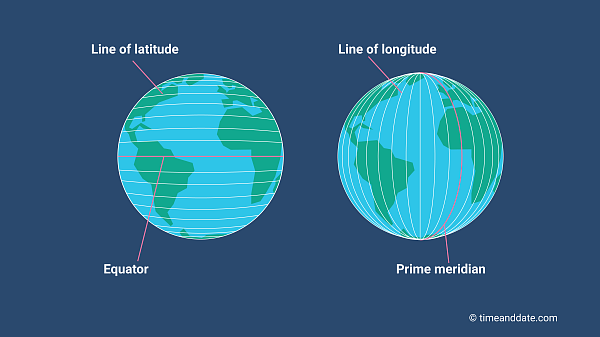
Often called parallels or circles of latitude, latitudes are imaginary circles parallel to the Equator. They are named after the angle created by a line connecting the latitude and the center of the Earth, and the line connecting the Equator and the center of the Earth.
Latitudes specify the north-south position of a location on the globe. Locations in the Northern Hemisphere are identified by northern latitudes and are assigned a suffix of N for north. Southern Hemisphere locations, on the other hand, are on southern latitudes and are assigned a suffix of S for south.
Longitudes are geographical positioning markers that run from the geographical North Pole to the geographical South Pole, intersecting the Equator. They meet at both Poles, and specify the east-west location.
Longitudes are therefore imaginary circles that intersect the North and South Poles, and the Equator. Half of a longitudinal circle is known as a Meridian. Meridians are perpendicular to every latitude.
The Prime Meridian is set as 0° longitude and it divides the Earth into the Eastern and the Western Hemisphere. All the other longitudes are measured, and named after the angle they make with respect to the center of the Earth from the intersection of the Meridian and the Equator.


No comments:
Post a Comment